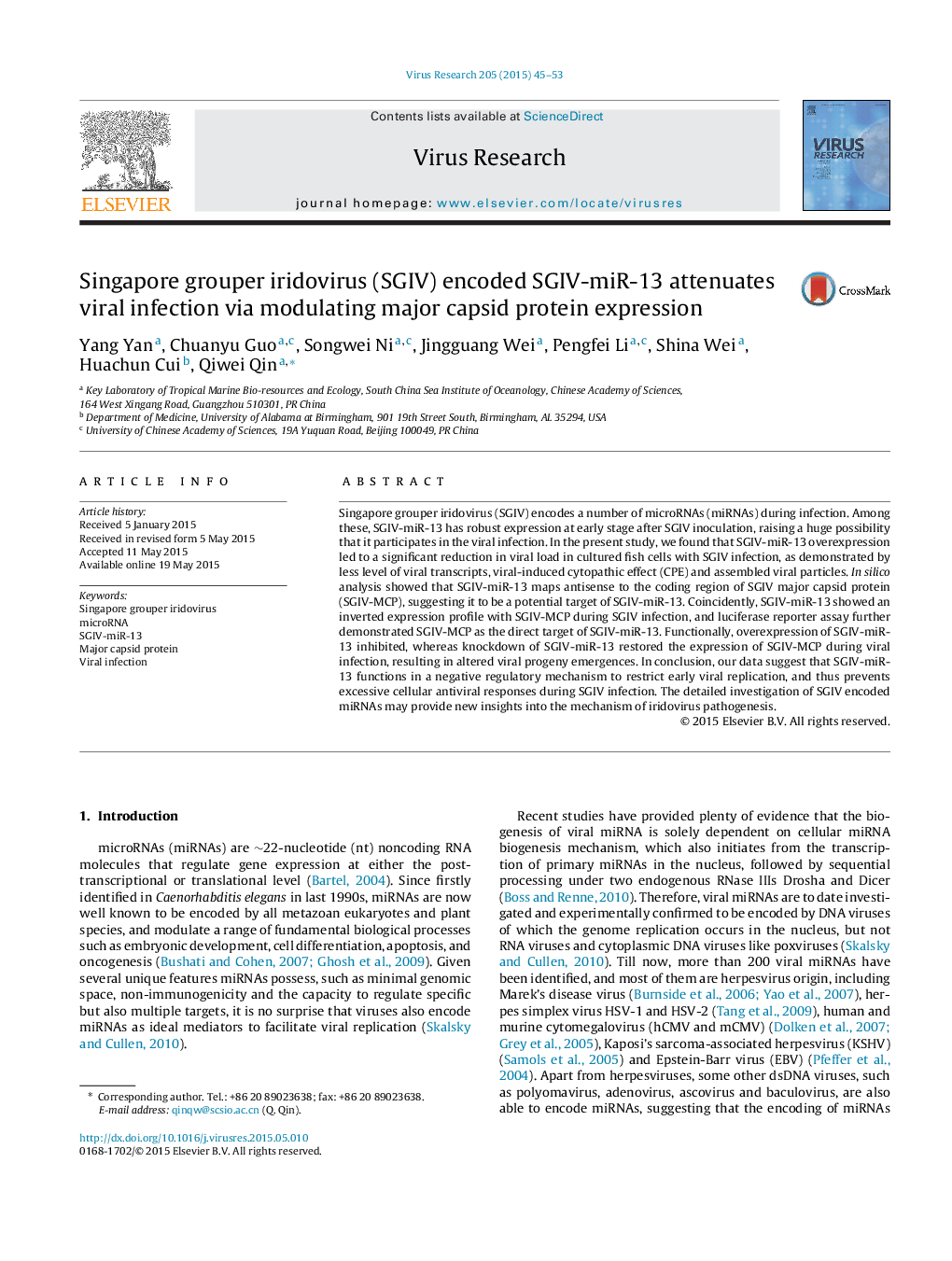| Article ID | Journal | Published Year | Pages | File Type |
|---|---|---|---|---|
| 3428179 | Virus Research | 2015 | 9 Pages |
•SGIV expresses miR-13 at an early stage after viral infection.•SGIV-MCP is a direct target of SGIV-miR-13.•SGIV-miR-13 functions as a negative regulator to restrict viral replication.
Singapore grouper iridovirus (SGIV) encodes a number of microRNAs (miRNAs) during infection. Among these, SGIV-miR-13 has robust expression at early stage after SGIV inoculation, raising a huge possibility that it participates in the viral infection. In the present study, we found that SGIV-miR-13 overexpression led to a significant reduction in viral load in cultured fish cells with SGIV infection, as demonstrated by less level of viral transcripts, viral-induced cytopathic effect (CPE) and assembled viral particles. In silico analysis showed that SGIV-miR-13 maps antisense to the coding region of SGIV major capsid protein (SGIV-MCP), suggesting it to be a potential target of SGIV-miR-13. Coincidently, SGIV-miR-13 showed an inverted expression profile with SGIV-MCP during SGIV infection, and luciferase reporter assay further demonstrated SGIV-MCP as the direct target of SGIV-miR-13. Functionally, overexpression of SGIV-miR-13 inhibited, whereas knockdown of SGIV-miR-13 restored the expression of SGIV-MCP during viral infection, resulting in altered viral progeny emergences. In conclusion, our data suggest that SGIV-miR-13 functions in a negative regulatory mechanism to restrict early viral replication, and thus prevents excessive cellular antiviral responses during SGIV infection. The detailed investigation of SGIV encoded miRNAs may provide new insights into the mechanism of iridovirus pathogenesis.
